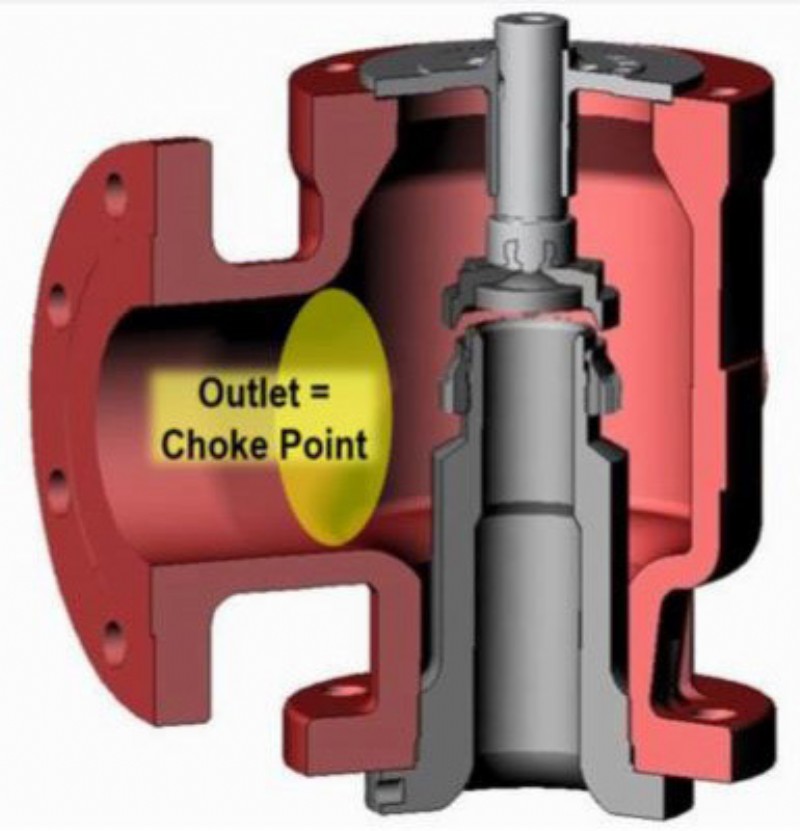Bigger is not always better

In addition to its process conditions, the actual flow capacity of a given PRV is driven by the combination of two design elements: the actual orifice area and the coefficient of discharge. Both of these elements are determined by the individual PRV manufacturer’s design and are certified by National Board.
When selecting a valve, one common myth has been the “bigger the flow, the better the valve.”
When a PRV has an exceptionally large orifice area and the discharge is not large enough to accommodate the expanding gas, the outlet can become ‘choked.’ This can lead to built up back pressure which is greater than 10% of the valve’s set pressure. This phenomenon is called “Body Bowl Choking” and it may cause valve instability, exhibited in chatter, flutter or galling on the disc and stem.
There are many reasons why a PRV might chatter, so diagnosing and correcting body bowl choking requires a detailed review of the PRV sizing calculations and consideration of the piping hydraulics, especially the PRV’s back pressure.
Bigger is not always better Potential hardware solutions to correct body bowl choking include restricting the lift (if that option is available) or switching to a balanced design relief valve, such as bellows or pilot operated relief valves.
Tel: 440 838 7560
Email: candersen@curtisswright.com
Web: www.farris.cwfc.com

| Telephone: | 01536 425980 |
| Email: | FarrisUK@curtisswright.com |
| Website: | https://www.cw-valvegroup.com/en-gb/home |
| More information on the Curtiss-Wright Valves Division (UK) BVAA Member Directory Page |
Search related valve / actuator articles: Curtiss-Wright Valves Division (UK)Issue 47ValvesSafety Relief Valves







-web.jpg)





